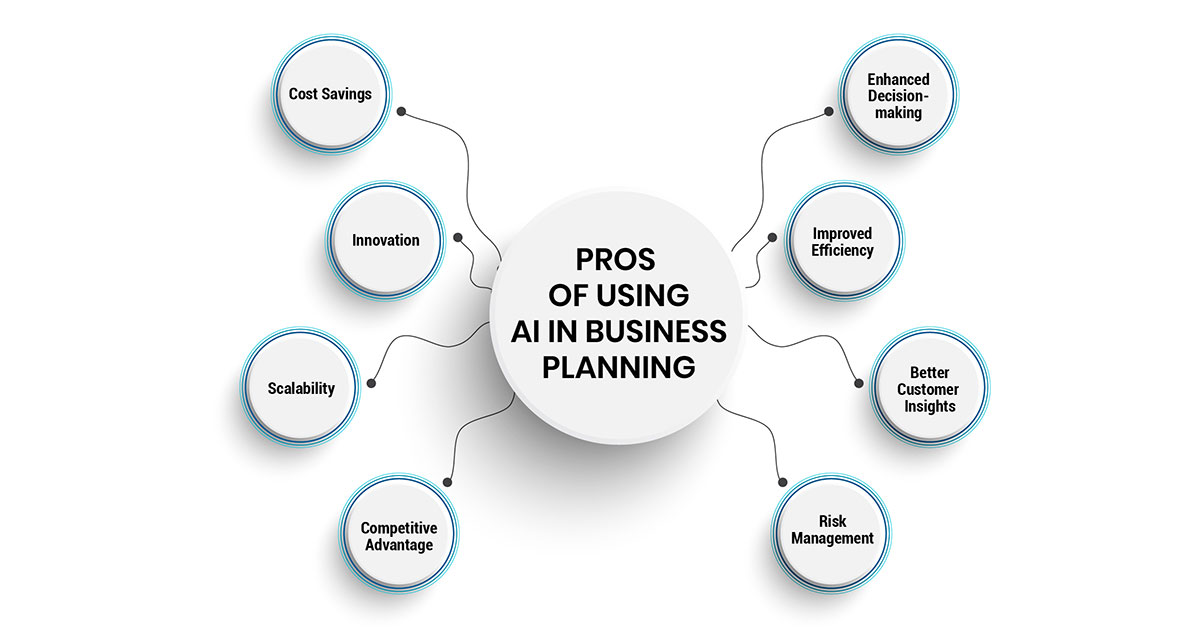Enhancing Company Effectiveness With AI: the Role of Conversational AI in Modern Workflow
In today's hectic business landscape, organizations are progressively turning to AI to enhance effectiveness (Business Efficiency with AI). Conversational AI sticks out as a crucial device, automating customer communications and enhancing interior interactions. By improving these procedures, organizations can speed up and decrease costs decision-making. The true possibility of conversational AI prolongs past simple automation. What specific advantages does it give contemporary operations, and exactly how can business effectively apply it to drive development?
Understanding Conversational AI and Its Capabilities
As companies increasingly seek cutting-edge services to improve efficiency, comprehending conversational AI becomes important. This innovation leverages all-natural language processing and equipment discovering to assist in human-like communications with individuals. By analyzing and reacting to questions, conversational AI can simplify operations and give important understandings right into consumer preferences and habits.
The capacities of conversational AI prolong past fundamental conversation capabilities. It can deal with complicated questions, maintain context over discussions, and adjust to specific user demands, thus developing a customized experience. In addition, its assimilation with various systems enables smooth communication throughout channels, ensuring that services remain easily accessible to their consumers.
Conversational AI systems can examine vast quantities of data to identify fads, which can notify tactical decision-making. This not only boosts functional performance yet also sustains innovation by making it possible for companies to react promptly to market changes and client demands.
Automating Consumer Communications for Improved Contentment
While businesses intend to improve consumer satisfaction, automating consumer communications has become a key technique. By leveraging conversational AI, organizations can simplify actions to customer queries, making sure timely and exact information distribution. This modern technology enables 24/7 availability, which substantially lowers delay times and raises availability for customers.
Furthermore, automation can take care of repeated jobs, such as order tracking and regularly asked concerns, liberating human agents to concentrate on more complex issues. This not just improves functional efficiency but additionally causes a much more personalized consumer experience, as automated systems can examine previous communications to tailor responses.
The execution of chatbots and online assistants aids to maintain a regular brand voice while gathering useful data for future enhancements. Ultimately, automating customer communications cultivates greater fulfillment levels, as clients appreciate much faster resolutions and smooth interaction, enhancing their loyalty to the brand.
Enhancing Internal Communication Throughout Groups
Effective internal interaction is crucial for a firm's success, and AI technologies can substantially improve this aspect. By simplifying information sharing and giving real-time cooperation devices, groups can function more successfully and stay involved. This change leads to boosted cooperation and a more natural workplace.
Streamlined Details Sharing
When organizations apply AI-driven devices for information sharing, they can substantially improve inner communication throughout teams. These devices promote the seamless exchange of info, ensuring that staff members have accessibility to pertinent information at their fingertips. By leveraging conversational AI, organizations can enhance feedbacks and queries, minimizing the moment spent searching for details. This not only minimizes miscommunication yet likewise fosters a culture of collaboration, as groups can rapidly align on tasks and share understandings. Furthermore, AI tools can classify and focus on details, making it much easier for workers to find vital resources. Because of this, interior communication becomes more effective, equipping teams to concentrate on tactical tasks instead of getting slowed down by information overload.
Real-Time Cooperation Devices
Building on the structure of streamlined info sharing, real-time cooperation devices play an essential duty in enhancing interior interaction across teams. These devices facilitate immediate exchanges of concepts, allowing groups to work with each other properly no matter geographical obstacles. By incorporating features such as immediate messaging, video clip conferencing, and collaborative record editing and enhancing, companies promote a culture of transparency and responsiveness. Furthermore, these devices enable the seamless assimilation of artificial intelligence, which can automate job jobs and provide instant responses, therefore boosting efficiency. With real-time cooperation, employees can resolve problems as they emerge, minimizing misunderstandings and delays. Inevitably, the implementation of such devices cultivates a much more cohesive workplace, vital for driving jobs ahead successfully.
Enhanced Team Engagement
Enhancing team interaction is vital for promoting a motivated workforce, as it directly affects performance and spirits within a company. Conversational AI plays a crucial role in boosting interior interaction throughout teams by assisting in seamless interactions. Through chatbots and digital assistants, staff members can quickly access details, share updates, and provide comments without the hold-ups connected with traditional communication methods. This modern technology motivates collaboration by damaging down silos, allowing cross-departmental dialogue, and making certain everyone continues to be lined up with business objectives. Additionally, customized AI-driven understandings can help identify interaction levels, allowing management to attend to issues proactively. Inevitably, improved group interaction via conversational AI not just enhances relationships amongst staff members however likewise drives overall service performance.
Speeding Up Decision-Making Processes
Synthetic Intelligence (AI) greatly simplifies decision-making procedures throughout numerous business fields. By using innovative formulas and data analytics, AI makes it possible for organizations to examine huge amounts of information promptly and accurately. This ability enables organizations to recognize fads and understandings that could or else remain undetected, facilitating even more informed choices.
Conversational AI, in specific, plays a crucial duty in boosting these processes by allowing real-time interaction and information retrieval. Staff members can engage with AI systems to posture inquiries and obtain instant comments, decreasing the moment invested in study and consideration. Additionally, AI assists in evaluating numerous circumstances and providing predictive understandings, which even more speeds up the decision-making timeline.
Ultimately, the assimilation of AI modern technologies fosters a society of dexterity and responsiveness within companies, encouraging leaders to make timely decisions that align with dynamic market conditions. This transformative effect on decision-making highlights the value of AI in contemporary operational strategies.
Lowering Operational Prices With AI Integration
AI combination plays a vital duty in minimizing functional costs by improving procedures and automating routine tasks. This innovation improves resource appropriation effectiveness, permitting services to optimize their workforce and products efficiently. As an outcome, companies can accomplish significant cost savings while keeping efficiency levels.
Structured Processes and Automation
As organizations increasingly seek methods to minimize operational prices, the integration of intelligent automation technologies has actually arised as a pivotal option. This technique improves processes by automating recurring tasks, consequently minimizing the requirement for hands-on intervention. By using conversational AI, companies can boost customer engagement while making sure efficient handling of queries, which results in quicker resolutions and enhanced complete satisfaction. Furthermore, automating operations accelerates and decreases mistakes reaction times, permitting groups to concentrate on tactical initiatives instead of routine procedures. The result is an extra dexterous business atmosphere where sources are used much more effectively. Subsequently, the combination of AI not just assists in cutting costs however likewise fosters development through the reallocation of human ability to even more value-added activities.
Enhanced Source Allotment Efficiency
Reliable source appropriation stands as a cornerstone for reducing operational expenses in contemporary services. By leveraging man-made knowledge, business can assess information patterns and anticipate resource needs extra accurately. Conversational AI plays a critical role in this process, making it possible for real-time communication and decision-making. It can automate organizing, take care of supply, and optimize workforce release, making sure that resources are made use of efficiently. This not just minimizes waste however additionally boosts efficiency. On top of that, AI-driven understandings enable companies to determine areas of over-expenditure and simplify operations appropriately. As companies welcome AI combination, they experience significant expense decreases while enhancing total operational performance. Ultimately, enhanced resource appropriation with AI placements go to website services to grow in progressively open markets.
Leveraging Information Insights for Strategic Planning
How can organizations harness information understandings to educate their strategic preparation? By using sophisticated analytics and data-driven techniques, services can gain important understandings that directly influence their critical choices. Conversational AI devices play a significant duty in this process by collecting and analyzing substantial amounts of data from client communications, market trends, and functional metrics.
These insights allow companies to recognize emerging opportunities and possible threats, permitting notified decision-making. Anticipating analytics powered by AI can forecast future fads, aiding in the formula of proactive techniques. By leveraging real-time information, firms can adjust their methods quickly to straighten with market characteristics.

Case Studies: Effective Execution of Conversational AI
Organizations significantly recognize the worth of conversational AI in enhancing functional performance and client engagement. A noteworthy situation is that of a leading retail company that implemented a chatbot to deal with customer inquiries. This lower feedback times by 60%, permitting human representatives to concentrate on intricate problems, ultimately enhancing customer contentment rankings.
In an additional instance, a monetary services strong integrated conversational AI right into its customer support procedures, causing a 30% reduction in call volume. The AI system efficiently managed regular questions, maximizing team for higher-level tasks and improving total solution high quality.
In addition, a health care supplier used conversational AI for appointment organizing and patient follow-ups. This effort structured procedures, bring about a 40% boost in appointment reservations and boosted person involvement.
These study illustrate how companies can leverage conversational AI to maximize processes, enhance customer experiences, and accomplish substantial operational investigate this site end results.
Frequently Asked Concerns

How Do I Choose the Right Conversational AI System for My Service?
To choose the right conversational AI platform, one need to evaluate business requirements, examine scalability, think about integration abilities, compare rates versions, take a look at individual reviews, and prioritize platforms providing robust assistance and personalization alternatives tailored to certain requirements.
What Are the Typical Difficulties in Executing Conversational AI?
Typical challenges in executing conversational AI include combination with existing systems, making sure natural language understanding, handling user expectations, resolving data privacy concerns, and protecting appropriate training and assistance for both employees and users. - Business Efficiency with AI
Just How Can I Determine the Success of Conversational AI Initiatives?
Success of conversational AI efforts can be measured through metrics such as customer involvement, action precision, customer complete satisfaction ratings, expense savings, and general effect on functional effectiveness, giving an extensive view of efficiency and renovation areas.
What Industries Advantage the A Lot Of From Conversational AI Solutions?
Industries such as retail, customer, financing, and healthcare solution experience considerable benefits from conversational AI remedies. These markets take advantage of AI to improve consumer communications, streamline procedures, and boost total efficiency, ultimately driving higher satisfaction and engagement.
How Does Conversational AI Incorporate With Existing Software Program Systems?
Conversational AI integrates effortlessly with existing software program systems by using APIs, allowing data exchange and enhancing customer experiences. This interoperability enables organizations to enhance and simplify operations communication throughout numerous systems, promoting greater operational efficiency.
Conversational AI stands out as a crucial device, automating customer communications and enhancing inner communications. As companies significantly seek innovative remedies to boost efficiency, recognizing conversational AI ends up being important. Conversational AI, in specific, plays an essential role in enhancing these procedures by making it possible for go to the website real-time interaction and details retrieval. Organizations increasingly identify the worth of conversational AI in enhancing operational performance and consumer involvement. Conversational AI integrates seamlessly with existing software application systems by utilizing APIs, enabling information exchange and enhancing user experiences.